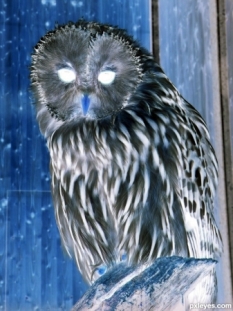The Wendigo, “Spirit of the Lonely Places,” is a monster of the forests of the Eastern United States and Canada—areas of North America with long, cold winters. The Wendigo is said by the Algonquian peoples to be a wild anthropophagic creature created by a human having been possessed by a demonic Manitou spirit. (The name “wendigo” may apply to either the evil spirit or the inhabited physical creature.) Legends state that a person becomes a Wendigo by the consumption of human flesh. Other stories tell of people “going Wendigo” through dark shamanic magic or by being bitten by one (as with werewolves), but survival of a Wendigo attack is rare, and a gradual transformation due to cannibalism, whether out of desperation or choice, is the most commonly cited cause of infection. Continue reading
Category Archives: Cryptozoology
Sea monsters, Bigfoots, Aliens, and other creatures that may or may not exist.
Monster of the Week: Giant Spiders
1 Legends and lore of spiders are numerous and widespread, and many of these involve giant spiders, and human-spider hybrids. Spiders are spinners and weavers, and therefore often associated with the spinning of tales as well as webs. Here are a few of the trickster deities, monsters and cryptids from the fascinating world of arachnids. Continue reading
Legends and lore of spiders are numerous and widespread, and many of these involve giant spiders, and human-spider hybrids. Spiders are spinners and weavers, and therefore often associated with the spinning of tales as well as webs. Here are a few of the trickster deities, monsters and cryptids from the fascinating world of arachnids. Continue reading
Monster of the Week: The Griffin
3…but the Griffin hath a body bigger than eight Lions, and stronger than 100 Eagles, for certainly he will bear to his Nest flying, a Horse and a Man upon his Back, or two Oxen yoked together as they go to Plow, for he hath long Nails on his Feet as great as Horns of Oxen, and of those they make Cups there to drink with, and of his Ribs they do make Bows to shoot with.
—John Mandeville, The Voyages and Travels, 1357
The Griffin (also Griffon, Gryphon, or Grype, among other variants) is a legendary creature with the body of a lion, and the head, wings, and talons of an eagle. Depictions of the griffin date back to 3rd millennium BCE Egypt and earlier, but are also found in ancient Greece, India, and elsewhere around the world. It is said that the feather of a Griffin can cure blindness, and poison will change color when served in a cup fashioned from a Griffin’s talon. Continue reading
The Hoot Owl of Death
5Birds of omen dark and foul,
Night-crow, raven, bat, and owl,
Leave the sick man to his dream—
All night long he heard your scream.
— Sir Walter Scott
Throughout many cultural traditions, Owls have been considered harbingers of bad luck, ill health, or death.
In most Native American tribes, Owls signify death. The call of the Owl is considered an unlucky omen. Some tribes believe the hoot of an Owl indicates that someone is going to die. Owls are known as messengers and companions for the gods of death. As a messenger of death, the Owl is not evil, but it can be foreboding. They carry messages from beyond the grave and when tribal taboos are broken, Owls deliver a supernatural warning. Owls are associated with ghosts among some Native American tribes because it is understood that the bony circles around an Owl’s eyes are made from the fingernails of ghosts.
Bessie, monster of Lake Erie
2Have you seen Bessie? She is the monster who lives in Lake Erie. Bessie has been sighted over the years at various location in and around the lake. The first recorded sighting was in 1793 and Bessie has been spotted with increasing frequency over the last thirty years.
Many ship crews have reported Bessie sightings, describing her as a grayish, snake-like creature 30-40 feet in length and 1 to 4 feet in diameter. In 1892 an entire ship and her captain reporting seeing a huge sea serpent 50 feet in length with a head raised four feet above the water.
Bessie, or her ancestors, may have been swimming in Lake Erie prior to European settlement. The Seneca Indians tell the story of the Good Spirit and the Evil Spirit, in which the Evil Spirit commands a huge serpent who swam the waters of the Niagara River and Lake Erie.
Other Iroquois legends describe the creature Oniare as a dragon-like horned water serpent that lurks in the Great Lakes. The Oniare was said to have a poisonous breath, and would capsize canoes and eat travelers. People would try to protect themselves from the Oniare through offerings and by invoking it’s mortal enemy–the thunder god Hinon.
As well of the native legends and historical accounts by sailors, a series of sightings in the 1990s indicate that this sea monster continues to inhabit the shallow waters of Lake Erie. When swimming or boating in Lake Erie, watch out for Bessie.



